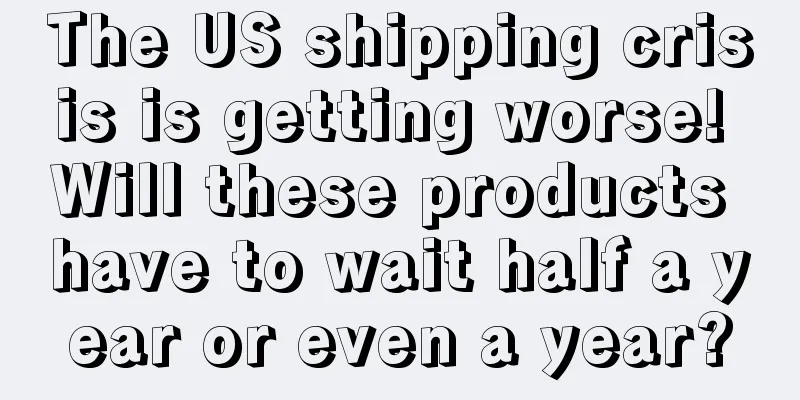|
We found a very interesting phenomenon:
In our category, there is a product that does not have much traffic. Looking at the performance of similar products, sales are generally poor. However, this seller's product is very abnormal. It performed mediocre before and during Black Friday, but after Black Friday, it suddenly soared from more than 2,000 in the Home & Kitchen category to around the top 30 and 50 in the category in just one week. What's even more exaggerated is that even if the best-selling variant is out of stock, they can still maintain such a high ranking.
Taking the products ranked 50-60 in the major categories as a reference, these products usually have sales of at least 10,000 units in the past month. Based on the current ranking of this seller in the major category, the sales of all variants should be able to exceed 10,000-20,000 units in a week.
However, strangely, the total sales of all variants of this product in the past month have just exceeded 3,000 units, and the best-selling variant is only 2,000 units, which is almost unchanged from the data 7 days ago. Considering the low traffic of this product itself, there is obviously a component of false sales, which should be the use of some kind of "black technology".
It is worth noting that this product did not take similar measures before and on Black Friday, perhaps because Amazon's review during Black Friday was more stringent and they did not dare to take risks. But after Black Friday, this "abnormal behavior" began to appear.
If it was just a temporary fabrication of sales to boost rankings, this method is easy to guess, but their ranking has been stable in the top 50 of the category for more than a week, which is even more intriguing. This company ships by FBA.
What methods did they use to maintain high rankings in the major categories without causing abnormal warnings? Are there any tools or strategies behind this?
PS This question is not about why the sales volume is so high all of a sudden and it gets the title of best seller , but why the sales volume officially shown on the Amazon page is not that high, but the ranking in the home & kitchen category is as high as top 50. Anonymous user 1. The core calculation logic of Amazon’s category ranking
Amazon's Best Sellers Rank (BSR) is calculated based on sales and sales trends over a recent period of time. It is not based entirely on absolute sales, but rather combines the following factors:
Sales fluctuations in a short period of time: A higher BSR will tend to indicate a sudden increase in sales within the last 24 hours (short-term burst weight).
Sales history weight: Longer periods of stable sales will increase the ranking stability of the listing.
Conversion rate and traffic impact: Although conversion rate is not a direct ranking factor, higher traffic + conversion rate improvement will indirectly affect ranking.
Inventory status: Even if out of stock, Amazon will temporarily retain the BSR for a period of time (this is to leave ranking space for products whose inventory will soon be restored).
Therefore, top-ranked products do not necessarily need to maintain extremely high sales for a long time. As long as there is a short-term sales surge for a period of time, combined with certain algorithmic operations, they can be "stuck" at a high level for a short period of time.
2. Possible "black technology" operation methods
Method 1: Off-site traffic impact + virtual order manipulation <br>This method uses off-site traffic and virtual order tools to create the illusion of a surge in sales.
Specific operation: Use off-site traffic tools (such as Google Ads, Facebook Ads) to direct traffic to the listing, simulating the traffic source of real buyers. Use virtual order tools to place orders, but these orders will not actually complete the transaction.
Some "black technology" tools can generate orders, but these orders may be paid through gift cards or special accounts and eventually canceled. Although these orders will be canceled, they will still be identified as "sales" by the Amazon system in a short period of time, which will help improve BSR. FBA's inventory still shows normal because the orders have not been actually shipped.
Advantages: Use off-site traffic to cover up the operation traces of virtual orders and prevent Amazon from detecting them. Create a high sales volume in a short period of time, thereby pushing up the BSR.
risk:
If you are not careful, Amazon may identify abnormal orders and punish your account.
Method 2: Off-site discount order + "empty package" operation <br>This method achieves a rapid increase in BSR through large discounts or free gifts combined with empty package delivery.
Specific operation: Use off-site discount tools (such as RebateKey, SuperURL) to attract buyers to place orders and sell a large number of products. When the product is actually shipped, it is sent as an "empty package" through FBA or self-delivery mode, but the order is still counted as sales. Some orders may be refunded in advance, but the sales are still calculated into the ranking.
Why don’t sales and BSR match?
Discounted orders usually don’t show up fully on the front end (such as in “Verified Purchase” in the Reviews section), and returns or refunds don’t immediately affect BSR.
Method 3: Category conversion + traffic positioning <br>This operation exploits category algorithm loopholes, divides products into less competitive subcategories, and then quickly obtains major category rankings through a small amount of sales.
Specific operations:
When creating a product, place it in a non-competing subcategory (e.g., a niche subcategory within Home & Kitchen).
Gain ranking bonus in the main category by ranking in this subcategory with low competition.
Combined with the short-term sales explosion, we quickly secured a position in the top 50 in each category.
Why can it rank high despite low sales volume?
By dividing the product into subcategories, Amazon may overestimate the performance of the product and give it additional weight in the BSR algorithm.
Method 4: Ranking "cache" operation before out of stock
Amazon has a short-term ranking cache mechanism for out-of-stock products. Even if a product is out of stock for a period of time, the previous ranking weight will not disappear immediately.
Specific operations:
Before the product runs out of stock, use virtual orders or off-site traffic to conduct large-scale impulse sales and quickly increase BSR.
After a product is out of stock, Amazon will retain the BSR ranking for a certain period of time (usually 3-7 days).
In addition, they may be able to keep the product in a certain saleable state by subsequently restocking (even if it is a small amount of inventory) to prevent the ranking from falling sharply.
Advantages: Even if sales are insufficient for a short period of time, the cache mechanism can keep the ranking high. By creating a "fake out of stock" (replenishing a small amount of stock after out of stock), the cache time can be extended.
Method 5: Manual intervention in Amazon ranking adjustment <br>Some service providers may directly manipulate the BSR and ranking of the listing through special channels (cooperation with Amazon internally or exploitation of loopholes).
Specific operations:
Use the service provider’s “internal tools” to adjust the BSR algorithm and directly intervene in the rankings.
Some big sellers may get short-term ranking support through Amazon’s “gray resources”.
Why don’t sales and rankings match?
This operation directly bypasses the normal algorithm rules, so sales cannot be accurately reflected in the front-end data.
3. Why didn’t their actions trigger a warning?
Data Masking:
By importing off-site traffic, the traces of abnormal operations can be concealed, and Amazon may mistake it for normal traffic.
Virtual orders may be generated using gift cards or unique payment methods to circumvent system detection.
FBA delivery mechanism:
When using FBA for delivery, even if there are abnormalities in some orders, it is not easy for Amazon to blame the problem on the seller.
Amazon is more tolerant of FBA sellers because they value the buyer experience more.
Holidays and system stress:
During peak seasons such as Black Friday, Amazon's systems and review teams are usually under great pressure, and certain anomalies may be ignored or delayed.
4. How to prevent competitors from doing this?
Monitor your competitors’ traffic and keyword rankings:
Use tools such as Helium 10 and Jungle Scout to analyze your competitors’ keyword traffic sources and whether there are any unusual fluctuations.
Report unusual orders or violations:
If you determine that your competitor has used fake orders, you can file a complaint against them for violating Amazon policies through the Seller Central or Brand Registry. Submit a detailed abnormal traffic and sales analysis report to help Amazon investigate.
Improve your own operation strategy: increase off-site traffic delivery, obtain rankings through real orders, rather than relying on black technology. Maintain continuous sales growth in the category to stabilize your own weight.
Anonymous user According to what you said, the capacity of the small category of this link itself is not that large, but the large category of this link suddenly increased dramatically, exceeding the capacity limit of the small category itself.
Based on my personal experience, there are several possibilities:
1. Off-site traffic diversion. Because the platform has limited small-category traffic, off-site traffic diversion is a relatively likely operation. Off-site + private traffic pool, some of which need to be reversed on the platform/group, and may not be found by searching on Google or FB, especially private traffic, which is more difficult to check.
2. Brush FBT associated traffic, FBT/Frequently bought together gray operation, I asked the service provider before, generally it can be obtained by accounting for 30% of the orders of other links, returns are not included, you can operate with a small account, black card settlement, 100 US dollars settlement 12 RMB, it can be displayed after 7-10 days. There is a prerequisite for brushing FBT, is there a possibility of combined purchases of your subcategory and other subcategories, or skipping orders? For example, this link has been brushed to 1 million impressions through FBT, of which the click-through rate is only 1%, that is 10,000 traffic, according to a relatively low conversion rate, there may be 500 orders. Therefore, skipping orders/combined purchases here, as well as the degree of FBT display, are the core factors affecting the effect.
3. Keyword homepage software. Some people say this tool is useful, while others say it is not effective. I think it depends a lot on the category market and link conversion conditions. During use, you need to maintain a good click-through rate and conversion rate.
4. Support from senior VM managers (revealed by the manager before). I have only come into contact with ordinary VM managers, and I have only heard about the so-called senior VM managers from hearsay.
5. Black technology exchanges weights. It is said that there is such a popular black technology:
Anonymous user But its actual sales volume is not that high. The sales volume in the past 30 days shown on the Amazon page is only more than 3,000. Using the above 5 methods 1, 2, 3, 4, and 5, its actual sales volume should have exceeded 10,000 in the past 30 days, but why is the sales volume shown on the page only more than 3,000 in the past 30 days, and the best-selling variant is only more than 2,000.
Anonymous user Could it be that they keep placing orders, then cancel the orders after a period of time has passed and the rankings are included?
Anonymous user @Anonymous user 5 No need
Anonymous user @Anonymous user I don’t know if the bug in the ranking system will have an impact. Sometimes the ranking system will not be updated in time.
Anonymous user It shouldn't be a system update. This ranking has been there for more than a week.
Amazon First of all, the sudden ranking change mentioned by the OP does not match the monthly sales that the actual ranking should have. It may just be a short-term ranking impact effect outside the site. Because the time is short and the system itself needs feedback, reaching that ranking does not necessarily mean the stable order volume that should be achieved for that ranking.
Secondly, you can check whether there are any changes in his comments to verify whether it is because of the merged links, and whether there are any changes in the shopping cart to verify whether it is a small account that is attacking.
This kind of sudden link, without any similar competitive advantage, is usually either a short-term and continuous off-site link, or a review-free link. The most likely possibility is that a keyword homepage tool was used. However, in the short term, this operation is dangerous and may only be a flash in the pan. However, you can continue to pay attention to see how long it can last.
Anonymous user No matter what kind of black technology is used, the BSR ranking is definitely sales-oriented, which means that the other party has indeed placed so many orders.
Conventional methods of manipulating sales:
1. Super low price discounts outside the site, bulk discounts, various deal sites, bloggers. The risk of being audited is relatively low.
2. Use keywords on the homepage software to increase traffic, which in turn drives sales. The risk of being audited is relatively low.
3. Use a small account to follow the sales and place fake orders.
4. Outlets, member days and other big promotions are a way to overtake others. (Because sales feedback on Black Friday and other events is lagging)
5. Use TRO accounts to place advertisements, use the idea of 0 yuan advertising fee to obtain traffic at low cost, and then expand the base.
Black technology will not last long. Don't think that white hat and black hat can coexist. Driven by interests, your direction will gradually go astray.
Don't call me lazy sheep It's very simple, the ranking of major categories is calculated as daily average.
Since you said that this product performed mediocrely before and during Black Friday, it means that the product only started to take off in December, and it has been less than half a month so far, or 12 days.
Assuming that the monthly sales of the top 50 in the major category is 15,000, then the average daily sales should be 15,000/30=500 orders.
The competitor has just broken through 3k+, let's say 3000, then the average daily sales should be 3000/12=250 orders. But don't forget that the sales of this product have been soaring, which means that the sales curve of others is increasing, not like the stable product sales curve which is basically horizontal.
This means that the average daily sales of this product has reached or even exceeded 500 orders. Anonymous user "Then the daily average should be 3000/12=250 orders"----The problem is that after the Black Friday period, it has been a best-selling variant with monthly sales of 1000 orders, and the total monthly sales of all variants is 2000 orders. Now the sales increase of all variants is only 1000 pieces. If we count the 12 days after Black Friday, the daily average cannot be 3000/12, but 1000/12=83. How can such an order volume take the top 50 ranking in the category? Unless black technology is used. I think it should be that a large number of accounts were used to place pending orders, cancel them after a period of time, and then continue to place orders.
Anonymous user The sudden surge in sales is nothing more than flash sales on the site/flash sales outside the site/private domain off-site traffic. Why is the sales volume not so high on the official Amazon page, but the home & kitchen category ranking is as high as the top 50? The BS ranking refers to the recent sales volume, which accounts for a large proportion. Its monthly sales may not be as much as other links, but its daily sales and recent sales growth are more than other links.
Anonymous user 1. I guess they will increase advertising and add off-site DEALs to boost sales. In any case, they will eventually need to increase sales to achieve rankings.
2. The sales volume shown on the official Amazon page is not that high, but the home & kitchen category ranking is as high as the top 50. ————Because the sales volume on the official Amazon page is lagging, it is possible that a lot of orders were placed in a certain day, but they have not been updated yet. You will find it after observing for a while.
Anonymous user There will be a certain delay in the official sales volume. If you look at it again after a while, you may find some clues. In addition, you can observe the traffic situation to see if it has increased year-on-year.
There are also off-site, whether there are a lot of invitations to order or incentives from celebrities, as well as some large discounts can also be observed, such as from the comments
Nelson0769 If it is a ranking, it should start with sales volume, but such a large number of orders in a short period of time is definitely abnormal.
Or there is a situation where it is placed outside the site, or on a discount website. There can also be such a large order volume
As for the sales volume of 3,000 units you mentioned, could this gap be due to a delay in your plug-in data? Anonymous user It is not the plug-in that shows the sales volume in the past 30 days on the Amazon front-end. The difference should not be so outrageous. The sales volume in the past 30 days shown on the Amazon page only adds up to more than 3,000. It stands to reason that with such a high ranking, its actual sales volume should have exceeded 10,000 in the past 30 days, but why is the sales volume shown on the page only more than 3,000 in the past 30 days, and the best-selling variant is only more than 2,000. This gap is too big.
Nelson0769 • Dongguan • 2024-12-17 11:06 @Anonymous user: There was a delay in sales in the past month. Take a look now to see if sales have increased.
Anonymous user Please attach the link, otherwise it will be hard to judge.
Generally, we consider the following from an intentional perspective:
1. The price changes based on whether there are continuous flash sales
2. Is there any external website?
3. Are there any merged seed comments or zombies?
4. Is the only source of product traffic the SB video?
5. Is there any category change?
Anonymous user New products do have a bigger momentum. For example, 50 orders can directly reach the top of the first page of the keyword natural position. This is a coincidence and will not last long. If you can create enough data during this short opportunity, you may be able to stabilize it, similar to the keyword on the homepage
shdhhd You can't just look at the sales volume of the past month. It's possible that there have been a lot of external advertising in the past few days. BSR is the ranking of sales volume in the short term. As long as the sales volume required for ranking is achieved in the short term, you can reach that position.
Anonymous user This should be a woot flash sale, because this flash sale is to separately allocate inventory to woot, and the inventory in the Amazon warehouse shows the sales volume, and the actual inventory sold by the flash sale is not limited to that
|










